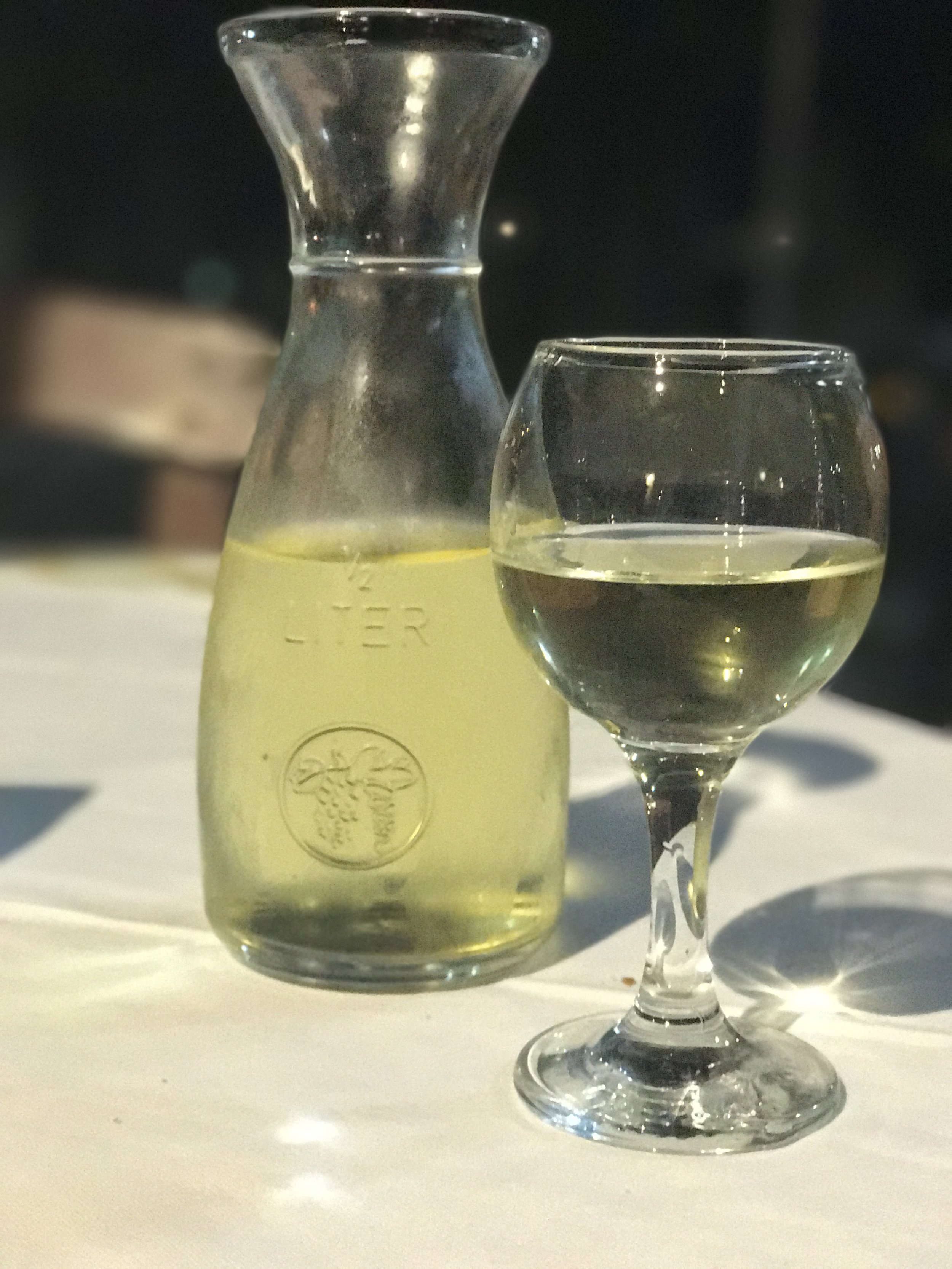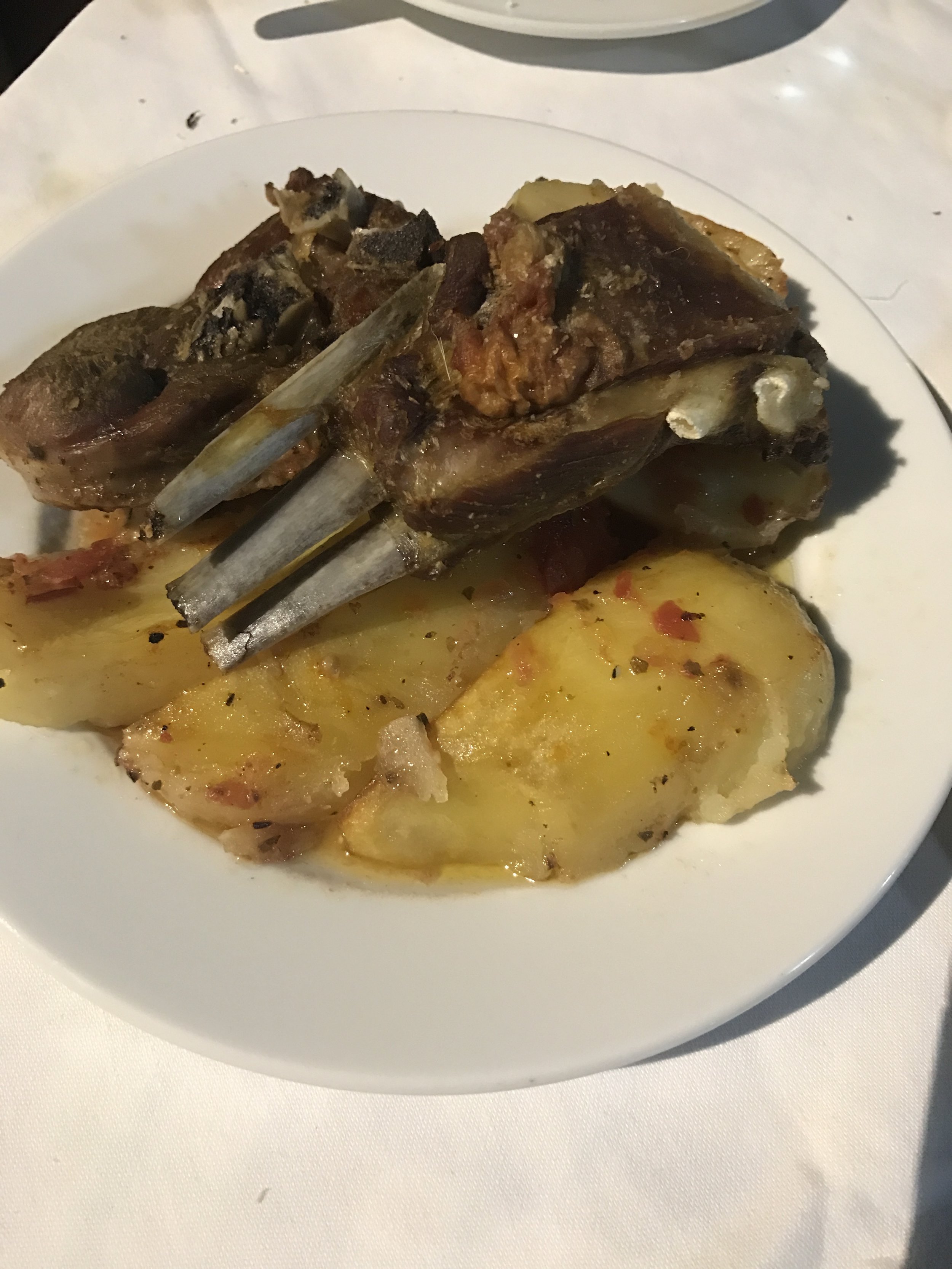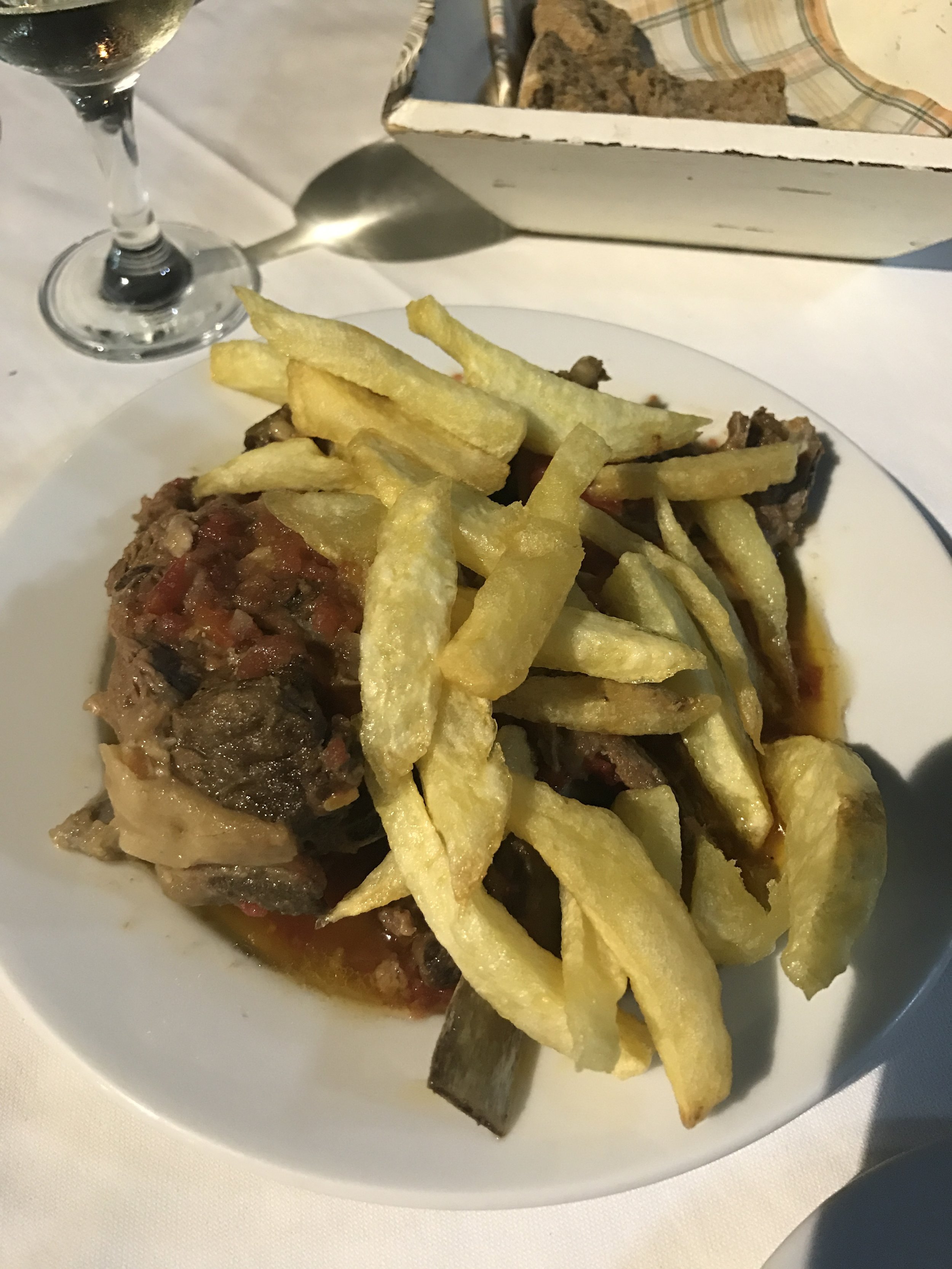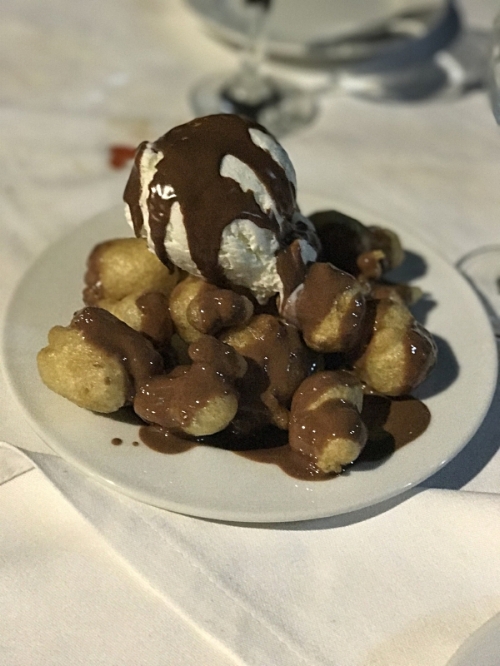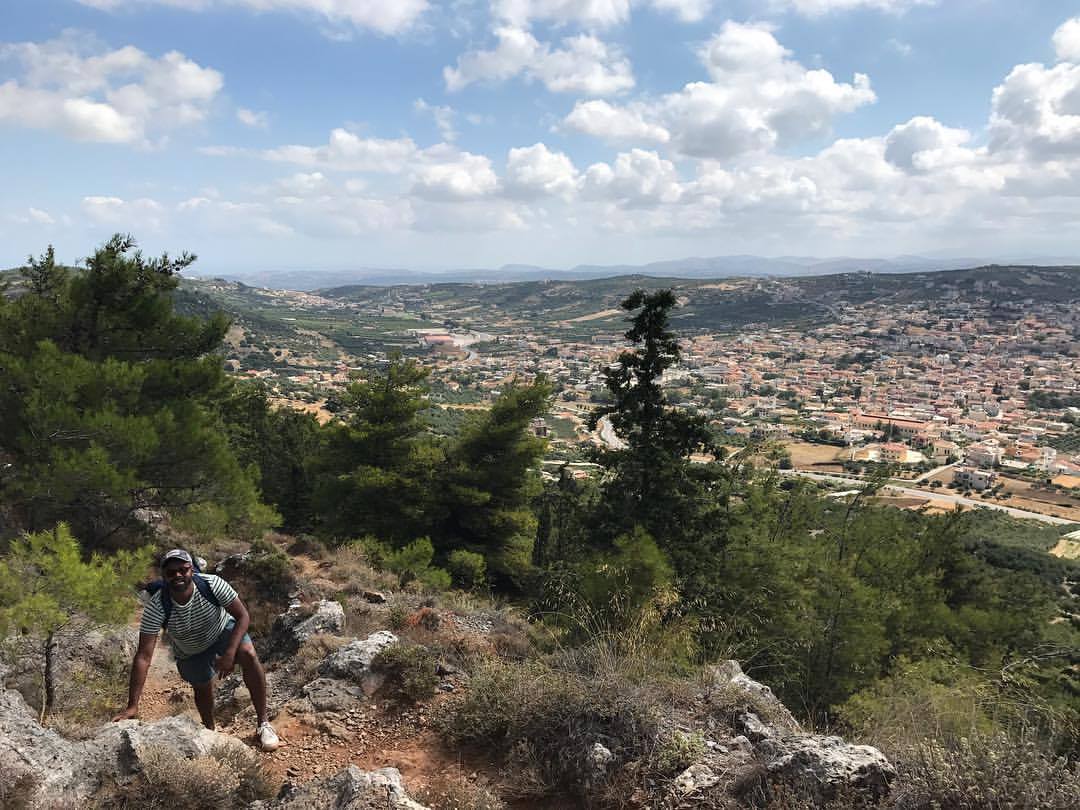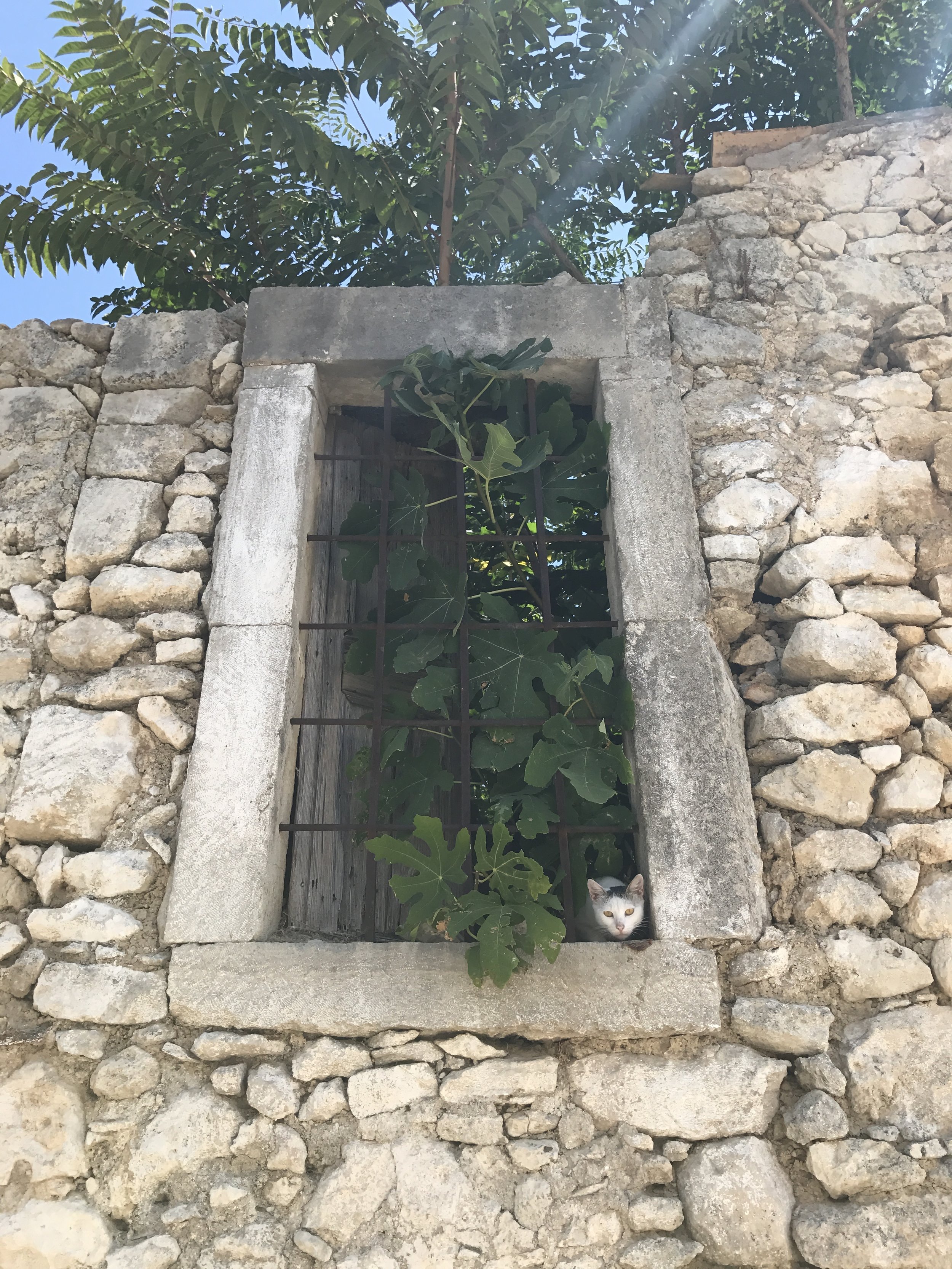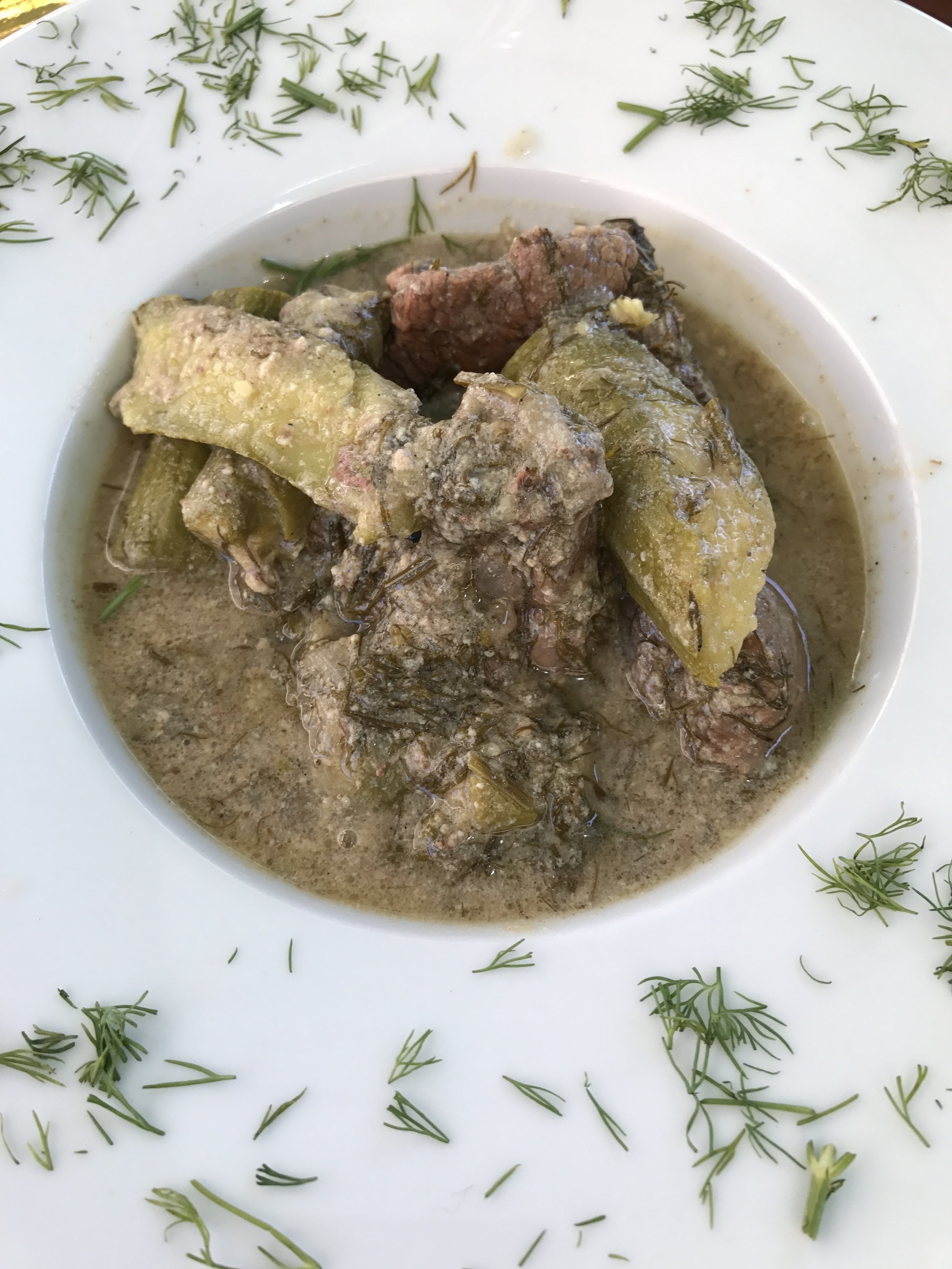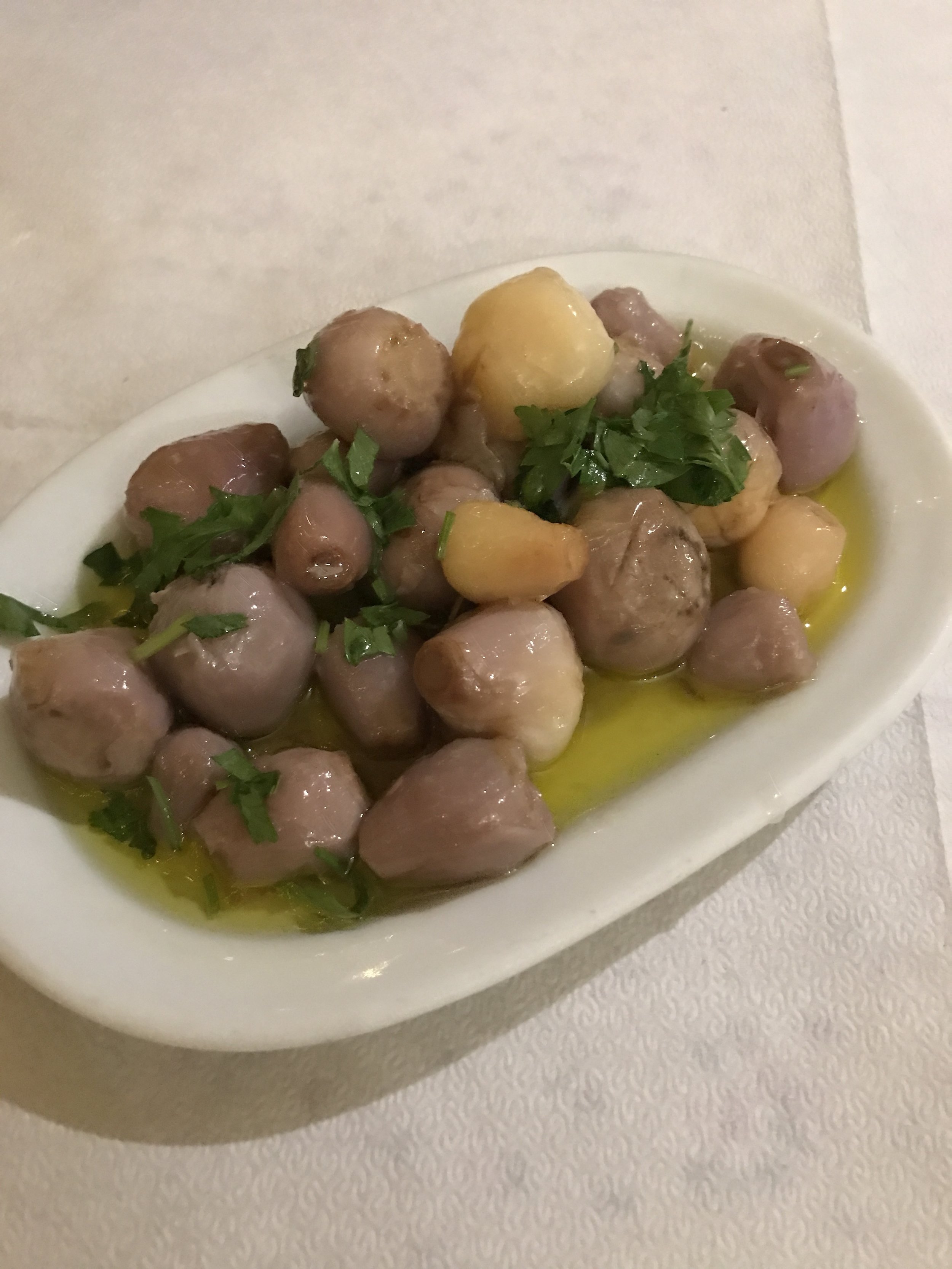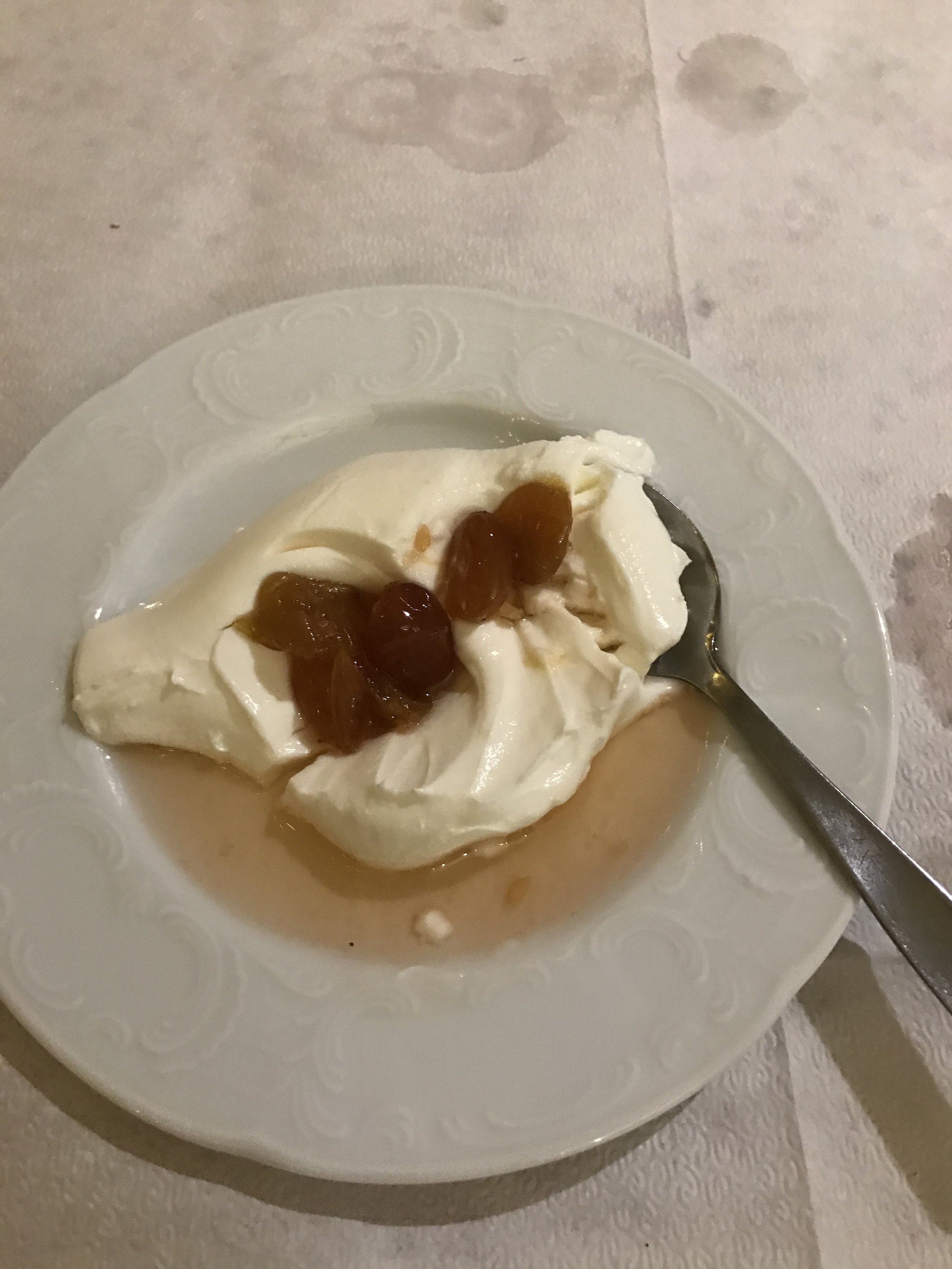Archanes, Crete
Finding Cretan hospitality on the hunt for a legendary rooster.
As we planned our trip to Greece, an important part of our research was the consultation of travel and food writers who had gone before us. We came across an article in Travel and Leisure that described a rooster dish that had our mouths watering. It was the first we'd read about a small village called Archanes (ark-HAHN-ehs), and as we researched places to stay we became enamored with its beauty, history, and wine-making legacy. We quickly decided that it would be the first stop of our week on Crete.
We rented a car, and it proved to be one of the best investments of the vacation. It put all of Crete at our fingertips, and Archanes was a perfect spot from which to explore the central and eastern parts of the island. Archanes is around a 30 minute drive from Heraklion, and is nestled at the base of Mount Juktas. The village is near the ruins of Knossos, which was King Minos' palace. We quickly realized that Archanes would be special; this ancient village is labyrinthine, welcoming, and overflowing with delicious dining experiences.
On our first night there, our host put Cretan hospitality on full display. She had collected water from the mountain that morning, and it was chilling for us in the refrigerator. Grapes from her family vineyard rested temptingly on the table. As we prepared for dinner, she brought us two skewers of meat she was preparing for her own dinner party. After an eight hour ferry ride, this was the homecoming we longed for.
My husband and I had dinner in the village square. Dinner starts late in Greece, around 9:00 or 10:00, and the square was full. It was clear that Archanes was not only a vibrant village, but also a destination for residents of nearby locales. We were about to find out why.
We had dinner at Lykastos, one of several restaurants clustered together in the square. In fact, they are so near each other, it's difficult to determine whose outside seating is whose. It's a lively scene: families and friends crowded together at tables, and the atmosphere was comfortable, unrushed, jovial, and communal. The village's stray dogs enjoyed the hospitality as well, cozying up to diners serially, with practiced earnestness. These plump village mascots are part of the dinner party, familiar faces who do quite well with their handouts. It wasn't unusual to see children playing with these dogs while the adults waited for their food.
Our appetizer was a sampler that included rusk with tomatoes and cheese, dolmades, vegetable fritters, olives, and a tangy yogurt sauce. Every bite was sublime, from the crunch of the rusk to the savory softness of the dolmades.
For our entrees, we ordered roasted goat, which came with french fries, and roasted lamb and potatoes. The goat was succulent and gamey, seasoned simply and cooked to tender perfection. The lamb was spectacular too, but paled next to the flavor of the goat. The potatoes two-ways characterize the Greek relationship with the tuber. They are ubiquitous and the oven roasted ones became a personal favorite. They are generally seasoned with olive oil, lemon, and oregano, and they manage to remain soft and juicy. By comparison, the french fries throughout Greece were less interesting and underseasoned. We lamented the fact that on this night, the masterpiece that was the goat was hidden under the pile of fries. The meal was washed down with the house white wine. Since food was the only language we shared with our server, we weren't able to learn much more about the wine. Nevertheless, it was delicious and remarkably affordable, served by the liter.
We learned during our stay on Crete that dessert is often complementary. On our first night in Archanes, we were served fried dough with ice cream and chocolate sauce. The dough balls were still warm, and were crispy on the outside and chewy on the inside. It was served with a serving of tippero, a digestif liqueur similar to grappa. We returned to our lodging full and ready to call it a day, only to be invited to join our host's dinner party. We were welcomed, given more liqueur and more dessert (this time a homemade Greek halva), and asked about our reasons for visiting Archanes. Our story about the rooster was met with thunderous (but good-natured) laughter: "You came all the way from New York for a rooster?!"
In the days that followed, we were able to explore Archanes and its surroundings. We walked the alleys of this ancient village, smiling at the elderly men who sit at the sidewalk cafes all day. Weaving our way through the maze of streets became easier when we began to recognize the dogs along the way. We popped into a couple of the small shops scattered among the restaurants (the florist also sells handmade jewelry!). We hiked Mount Juktas, which overlooks the village and retains significant ecological and spiritual significance for local residents. Every August, the faithful hike up the steep, rocky path in order to lay flowers at the chapel at the top of the mountain.
We also decided to visit a winery in the village. The map said Sinadinakis winery was just a short walk from the village square, so we chose that one. What we found, to our confusion, was an unmarked private residence. When we asked the driver of a passing pickup truck, "Is there a winery around here?" he smiled and parked. When we showed him the map and indicated the Sinadinakis winery he responded proudly: "Yes. I am."
As it turns out, he really was the winery. In his best English, he invited us into his home. He explained that he was a chemist, and that he had turned his house into a winery. Very quickly, since he was on his way to the farm, he showed us his equipment and discussed his production. And, since he wasn't able to taste with us, he referred us to a restaurant in the square, Bakaliko, and said to tell them he had sent us.
Bakaliko is adjacent to Lykastos. During our time in Archanes, we enjoyed a lunch and two wine tastings there (one of Sinadinakis wines, and then a more formal tasting of local pours). The restaurant consists almost entirely of outdoor seating, with some provisions -- like local olive oil, teas, spices, and wines -- for sale inside. For lunch, we enjoyed an arugula salad with caramelized figs, feta, and walnuts. The salad was warm from the figs, and the feta was creamy and smooth, with no tangy aftertaste. Some salads have one or two perfect bites, in which all the component parts work in harmony with each other. This salad was all perfect bites.
We enjoyed a bowl of throuba olives, which are wrinkled olives local to Crete, and my husband had the Brinks beer, a local blonde (unfiltered and non-pasteurized) from Rethymno in Crete. My entree was hunkar begendi, a Turkish dish which incorporates an aubergine puree and bechamel sauce with lamb, tomatoes and onions. Dhrubo ordered the beef with zucchini, dill, lemon, and egg. The hunkar begendi was rich and flavorful, and the lamb was tender. I loved this dish, especially the way all the flavors complimented each other. From the taste I had of Dhrubo's plate, the dill was beautiful and bright.
At our wine tasting, we tried five Cretan wines, each of which was thoughtfully explained by our host. We ordered both a cheese plate and a charcuterie plate, all of which proved to be more than we could finish in a single seating. The cheese plate came with four cheeses, bread, and an olive tapenade. The charcuterie plate was overflowing with meats, including bacon and three sausages.
We quickly learned that the restaurant with the legendary rooster was no longer around. We didn't miss it for a second. That elusive dish had brought us to a village that overflows with dining options (we didn't even get to all of them!). One afternoon before we headed out to explore the island, we grabbed a bite at Babis, a tiny shop offering souvlaki and gyros. Their gyro should be the example pictured in the dictionary of food; it was unadulterated, simple food prepared with pride. My mouth waters now, just remembering the crunch of the fries against the warm lamb and cool sauce. This, in my opinion, is the best use of french fries in Greek cuisine: gyro stuffing. Unbeatable.
We had a few days in Athens before our vacation ended, and we were able to enjoy traditional Cretan food there, too. We learned that there are many restaurants named Kriti in Athens, since that's the Greek word for Crete. The one in the Omonia district, at Veranzerou 5, has successfully transferred Cretan traditions -- from the cuisine to the hospitality -- to the city. We were happy to get to try this restaurant, as they were closed for vacation in August when we first tried to dine there. We started with a root salad and of course ordered the lamb with roasted potatoes. But what stole the show was the bright salad with -- among other flavors -- shaved cheese, figs, and pomegranate arils. We were transported back to Archanes for a bit, right down to the complementary dessert and liqueur at the end of the night.
We never got to taste that rooster dish that first lured us to a tiny, ancient village on Crete, but we still feel lucky to have spent part of our vacation in Archanes. The dedication to fresh ingredients, presented simply and prepared with love, flavored every meal we had there. Paired with an unparalleled level of hospitality that comes from a genuine pride of place, the dishes of Archanes will forever rank as some of the most satisfying we've ever had.

